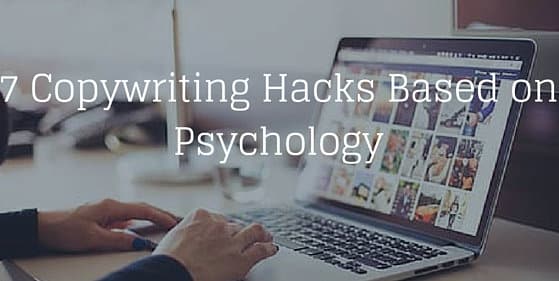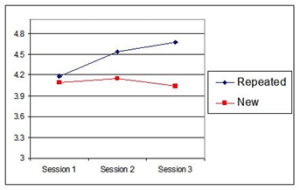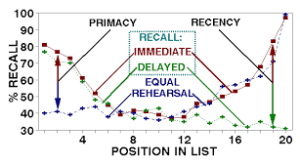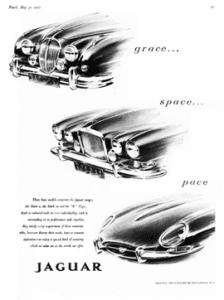
Copywriting may seem burdensome, but in knowing a few hacks will help you with this endeavor. Improving the impact of your content marketing requires one to be creative in their writing. One approach you can consider is taking a psychological perspective on the matter.
We present 7 copywriting hacks based on behavioral psychology which can be helpful for your brand. Studies and professional opinions have been provided in support of these. Read on to find which of these can be applied to your work.
#1 Illusory Truth Effect

All of us are subject to persuasive marketing messages every day. Assessing the validity of each will give us too many things to decide on. Our brain copes with all these by turning to the judgment of others.
Social proof assumes the actions of others reflect correct behavior for a particular situation. A number of brands have used this to promote their brand via reviews or testimonials of their consumers.
Aside from this, the repetition of a statement tends us to have it correlated with accuracy. This subconscious idea is what the Illusory Truth Effect is about. The more we hear or read about the idea, the greater the accuracy, and truth it possesses.
A research on this matter is published in the Association for Consumer Research website. Participants were asked to rate the level of trust they have in a statement. Results show that statements repeated were perceived as more trustworthy than those which were not.
This copywriting hack may not come up with the same effect as social proof. However, this can be used to build trust to businesses providing white-label products. In your writing, repeat statements which you want to impress upon your readers to remember and believe in.
#2 Textural Adjectives
The use of textural adjectives is a copywriting hack you can consider. Having this as part of your work is a pretty good twist. This may be different from writing styles which are conventionally plain and texture-less.
Emory University’s Krish Sathian conducted several studies on how these types of adjectives activate the human brain in a certain way. Different textural adjectives activate the sensory areas of the brain in various ways. A comparison between textural adjectives and literal meanings were made.
fMRI data collected from the participants showed a difference between the said comparison. When the textural adjective was used (“Having a rough day?”), activity jumped in the somatosensory cortex. This is the receptive area for the sense of touch. When the literal meaning was used (“Having a bad day?”), no significant brain activity was registered.
There is still more research to be conducted on the effectiveness of this method. However, the increase in brain activity has been linked to increased recollection and memory. In your work, make sure that the adjectives you use are still significant with the context.
#3 Serial Position Effect

Serial Psitioning is a copywriting hack you can use. This effect explains that the brain gives priority is given to the first and last pieces of information. Retention of information is consequently called the primacy effect and recency effect. Information in the middle is not remembered as much.
Bennet Murdock, Jr. conducted an experiment in 1962 on this. Participants remembered words presented earlier and towards the end of the list. Words at the beginning of the list were retained in long-term memory. Those towards the end of the list went to short term memory.
Online readers are subject to millions of content daily. Bullet points allow you to communicate key information in a directly accessible manner. These make it easier for readers to take in what you want to come across.
With the given copywriting hack in mind, prioritize the information placement. Place those which you strongly emphasize in the first and last parts. This increases the chances of readers remembering what you find crucial.
#4 Post Script

Using a postscript (P.S.) comes from the Latin “post scriptum.” This translates to “what comes after the writing.” This is the final part of your work that your readers engage with.
This copywriting hack catches the attention of your readers. It is a quirk at the end of your pitch. As supported with the Serial Position Effect, you can leverage this to successfully communicate with your readers.
Direct Mail Copywriter Ray Jutkins has his take on using PS. According to research, 79% of people who receive direct mail read the PS first. PS helps you with your communication in various ways.
Using the PS as a copywriting hack can be a strong or soft sell to your readers. It can also provide recommendations for endeavors you and your recipient can engage with. It can be used to promote a call to action (CTA) as well.
This copywriting hack is essential in long-form content. Long form content encompasses but is not limited to, blogs, emails, and online articles. PS can be used to reinforce your main CTA. You can also add a direct link to a landing page to increase conversion as well.
#5 Justification Effect
The Justification Effect is another copywriting hack you can use. Having a reason can already be enough to encourage people to act on what they are being persuaded to do. This is true even if the reason given is a bad one. The crucial word for this hack is the word because.
Harvard researcher Ellen Langer believes that this occurs due to mindlessness. This demands the presence of internal scripts that guide our responses to various scenarios. The word because aids us in assigning blame, credit, or reason to something to help us respond accordingly.
Dr. Robert Beno Cialdini is a renowned psychologist, author, speaker, and professor. In The Psycholoy of Persuasion, he recalls an experiment in the Xerox line. A would-be line-jumper used several reasons to test which resulted to a more positive response. The justified reasons, whether strong or weak, were more successful than the unjustified reason.
Applying this as a copywriting hack is good for persuasion material. Construct your content around reasons to take action. The word becauseis important because it reinforces your valid reason for a concept.
#6 Freedom of Choice

Another useful copywriting hack is reminding your readers of their freedom to choose. They are not coerced to do something they don’t want to do in the first place. The phrase “… but you are free…” (BYAF) reminds them that they are at their own liberty to accept or refuse whatever you are offering.
Dr. Christopher Carpenter of Western Illinois University conducted a meta-analysis on the effectiveness of this technique. This examined 42 various studies on BYAF with 22,000+ participants. Results showed that using BYAF multiplied twice the compliance rate. The conversion rates doubled.
Apply this in your own work, for example in conducting online surveys. You can request their participation in your survey, but the state in the second clause that they are free to pass on that as well. Gives them a sense of power and control of their own decisions.
Reminding them of their freedom of choice reminds them that they are still in control at the end of the day. Project yourself as humble enough to acknowledge their power. They will feel more in control of themselves and their business transactions with you, rather than you shoving an idea or product for them to take.
#7 Rhyming

Rhymes are commonly used in children’s literature. This is an amusing way to help train their memory and comprehension. This can also be used for adult’s writing approach as well.
Rhyming as a copywriting hack is proven by studies to be effective as well. As our brain processes rhyming words and phrases, we perceive them as more accurate or truthful. Providing validity to your claim is one of the greatest results of this.
Matthew McGlone and Jessica Tofighbakhsh conducted research on Rhyme as Reason in Aphorisms. A poetic form of writing had an impact on people’s insights into accuracy. This is specifically in relation to human behavior.
In its 1962 ad, Jaguar used this copywriting hack. Their marketing strategy involved the use of three rhyming words. These aim to describe the look and performance of their vehicle. In three rhyming words, they were able to create a lasting impression on those who came across it.
Come up with creative ways to use rhymes as your next copywriting hack. Make all of the words or phrases stand as their own. They should be aligned and consistent with your campaign to make your idea more truthful to your audience.
Wrapping it up
These 7 copywriting hacks are devised to assist you in improving your communication. A mutual understanding between the brand and your audience is vital in sending and receiving the right message you are trying to convey. These hone the eccentricities of one’s unconsciousness. This aids in bringing down barriers that limit your marketing strategies.
These copywriting hacks have been backed up by studies and professional opinions. More studies for verification is needed in the future. In spite of that, these have already undergone the scientific method and have reflected positive results in relation with human behavior.










